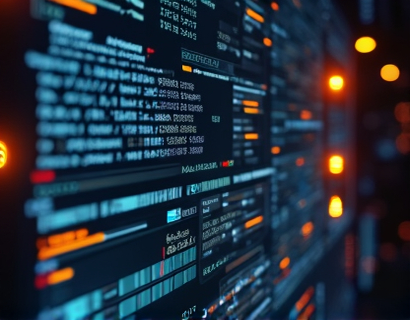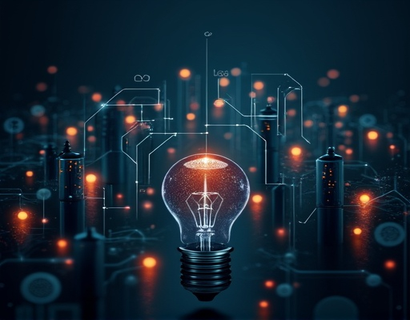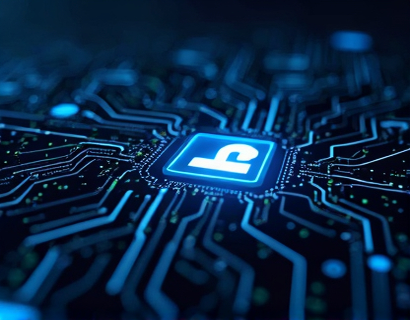Unlocking Digital Growth: Harnessing AI and Crypto for Enhanced Ecosystem Experiences
The digital landscape is rapidly evolving, driven by technological advancements that redefine how we interact, work, and innovate. At the forefront of this transformation are two revolutionary technologies: Artificial Intelligence (AI) and Cryptocurrency. These technologies, when fused, offer unprecedented opportunities to enhance digital ecosystems, providing more secure, efficient, and engaging experiences for users. This article delves into the strategic integration of AI and cryptocurrency to unlock new potentials in digital growth and engagement, offering insights for tech innovators and early adopters.
Understanding the Synergy Between AI and Cryptocurrency
AI and cryptocurrency may seem like disparate entities at first glance, but their convergence creates a powerful synergy. AI, with its ability to process vast amounts of data, learn from patterns, and make intelligent decisions, complements cryptocurrency's decentralized and secure nature. Together, they can create robust, autonomous, and trustless systems that enhance various aspects of digital ecosystems.
Enhanced Security Through Blockchain and AI
One of the most significant benefits of combining AI and cryptocurrency is the enhancement of security. Blockchain technology, the backbone of cryptocurrency, provides a decentralized and immutable ledger that ensures transparency and security. AI can further bolster this by detecting and mitigating threats in real-time. Machine learning algorithms can analyze patterns and anomalies in blockchain transactions, identifying potential fraud or malicious activities before they occur. This proactive approach to security is crucial in a digital environment where data breaches and cyber threats are increasingly common.
Improved User Authentication and Identity Management
User authentication and identity management are critical components of any digital ecosystem. Traditional methods often rely on passwords and multi-factor authentication, which can be vulnerable to attacks. The integration of AI and cryptocurrency offers a more secure and user-friendly solution. Self-sovereign identity (SSI) frameworks, powered by blockchain, allow users to control their digital identities and share verification data securely. AI can enhance this by providing biometric authentication, such as facial recognition or voice recognition, adding another layer of security. This not only protects user data but also streamlines the authentication process, improving user experience.
Optimizing Content and Personalization with AI
In the digital age, content is king. However, creating and managing relevant, engaging content at scale is a significant challenge. AI plays a pivotal role in optimizing content and personalizing user experiences. By analyzing user behavior, preferences, and interactions, AI algorithms can curate personalized content that resonates with each user. This not only increases engagement but also fosters a more loyal and active user base. For digital ecosystems, this means higher retention rates and a stronger community presence.
Automated Content Generation and Management
AI-driven tools can automate the content creation and management process, reducing the workload on human content creators. Natural Language Processing (NLP) and Generative Adversarial Networks (GANs) can generate high-quality content, from blog posts to social media updates, tailored to specific audiences. This automation ensures a consistent flow of fresh, relevant content, keeping users engaged and informed. Additionally, AI can manage content lifecycles, optimizing publication times and channels based on data-driven insights, further enhancing reach and impact.
Leveraging Cryptocurrency for Decentralized Economies
Cryptocurrency enables the creation of decentralized economies within digital ecosystems, offering new models for value creation and distribution. By integrating cryptocurrency, platforms can incentivize user participation, reward content creators, and facilitate peer-to-peer transactions without intermediaries. This not only reduces costs but also empowers users, fostering a more equitable and dynamic ecosystem.
Tokenization of Assets and Rewards
Tokenization, a process enabled by blockchain, allows the creation of digital tokens that represent assets or rewards. In a digital ecosystem, tokens can be used to reward users for various activities, such as content creation, community engagement, or data contribution. These tokens can have intrinsic value or be tied to utility within the ecosystem, encouraging active participation and loyalty. For instance, a platform might issue tokens for users who contribute high-quality content, which can be used to access premium features or traded within the community.
Decentralized Finance (DeFi) Integration
Decentralized Finance (DeFi) is another area where AI and cryptocurrency intersect to create innovative financial services. DeFi platforms use smart contracts and blockchain to offer lending, borrowing, and trading without traditional financial intermediaries. AI can enhance DeFi by providing predictive analytics, risk assessment, and automated trading strategies. This combination can create more efficient and accessible financial services within digital ecosystems, attracting a broader user base and fostering economic growth.
Building Trust and Transparency
Trust and transparency are fundamental to the success of any digital ecosystem. The combination of AI and cryptocurrency addresses these concerns by providing transparent, verifiable, and tamper-proof systems. Blockchain's immutable ledger ensures that all transactions and interactions are recorded and accessible, building trust among users. AI can further enhance transparency by providing real-time insights and analytics, allowing users to understand and verify the ecosystem's operations.
Smart Contracts for Automated and Trustless Transactions
Smart contracts, self-executing contracts with the terms directly written into code, are a cornerstone of blockchain technology. When integrated with AI, smart contracts can automate complex processes, ensuring that transactions are executed only when predefined conditions are met. This not only speeds up processes but also reduces the risk of errors and fraud. For example, in a content creation ecosystem, a smart contract can automatically distribute tokens to content creators based on predefined metrics, such as views, likes, or engagement levels.
Scalability and Interoperability
As digital ecosystems grow, scalability and interoperability become critical. AI and cryptocurrency offer solutions to these challenges by enabling seamless integration and communication between different systems and platforms. AI can optimize network performance, manage load balancing, and predict scalability needs based on user behavior and data patterns. Cryptocurrency, through interoperable blockchain networks, allows different ecosystems to interact and exchange value, creating a more connected and cohesive digital landscape.
Cross-Chain Solutions and Atomic Swaps
Cross-chain solutions and atomic swaps are technologies that enable different blockchain networks to communicate and transfer assets directly, without the need for intermediaries. AI can enhance these solutions by optimizing routing and ensuring the security and efficiency of cross-chain transactions. Atomic swaps, facilitated by smart contracts, allow users to exchange cryptocurrencies directly, maintaining the integrity and ownership of assets. This interoperability is essential for building a unified and scalable digital ecosystem.
Future Prospects and Challenges
The integration of AI and cryptocurrency in digital ecosystems holds immense potential, but it also comes with challenges. Regulatory uncertainties, technical complexities, and user adoption are key factors that need to be addressed. However, as the technology matures and more use cases emerge, these challenges will be overcome. The future promises a more secure, efficient, and user-centric digital landscape, driven by the synergy of AI and cryptocurrency.
Regulatory Considerations
Regulation plays a crucial role in the adoption of AI and cryptocurrency. While these technologies offer numerous benefits, they also raise concerns about privacy, security, and financial stability. It is essential for policymakers to create a balanced regulatory framework that fosters innovation while protecting users. Collaboration between technologists, regulators, and industry stakeholders is key to developing policies that support the responsible growth of digital ecosystems.
Technical Challenges and Solutions
Technical challenges, such as scalability, interoperability, and user privacy, need to be addressed to fully realize the potential of AI and cryptocurrency in digital ecosystems. Advancements in blockchain technology, such as layer 2 solutions and sharding, can improve scalability. Cross-chain protocols and standardized interfaces can enhance interoperability. Privacy-preserving techniques, like zero-knowledge proofs, can ensure user data is protected while still enabling secure and transparent transactions.
User Education and Adoption
User education is vital for the widespread adoption of AI and cryptocurrency in digital ecosystems. Many users are still unfamiliar with these technologies and may be hesitant to adopt them. Providing clear, accessible information and user-friendly interfaces can help bridge this gap. Educational initiatives, tutorials, and community support can empower users to understand and leverage these technologies, driving broader adoption and engagement.
In conclusion, the fusion of AI and cryptocurrency offers a transformative path for digital ecosystems. By enhancing security, personalizing user experiences, enabling decentralized economies, and building trust, these technologies can drive significant growth and engagement. For tech innovators and early adopters, embracing this synergy is not just an opportunity but a necessity in the evolving digital landscape. By staying ahead of the curve, they can lead the way in creating more robust, secure, and user-centric digital ecosystems.










































